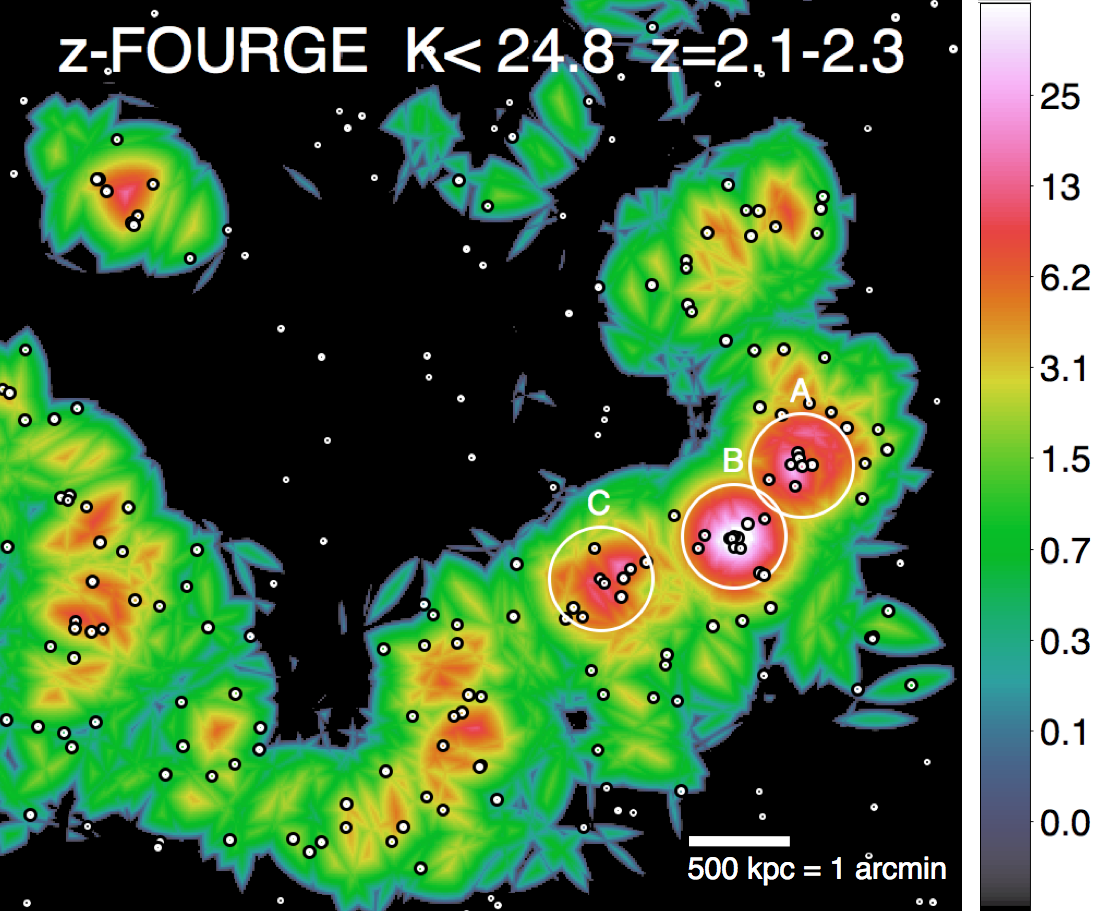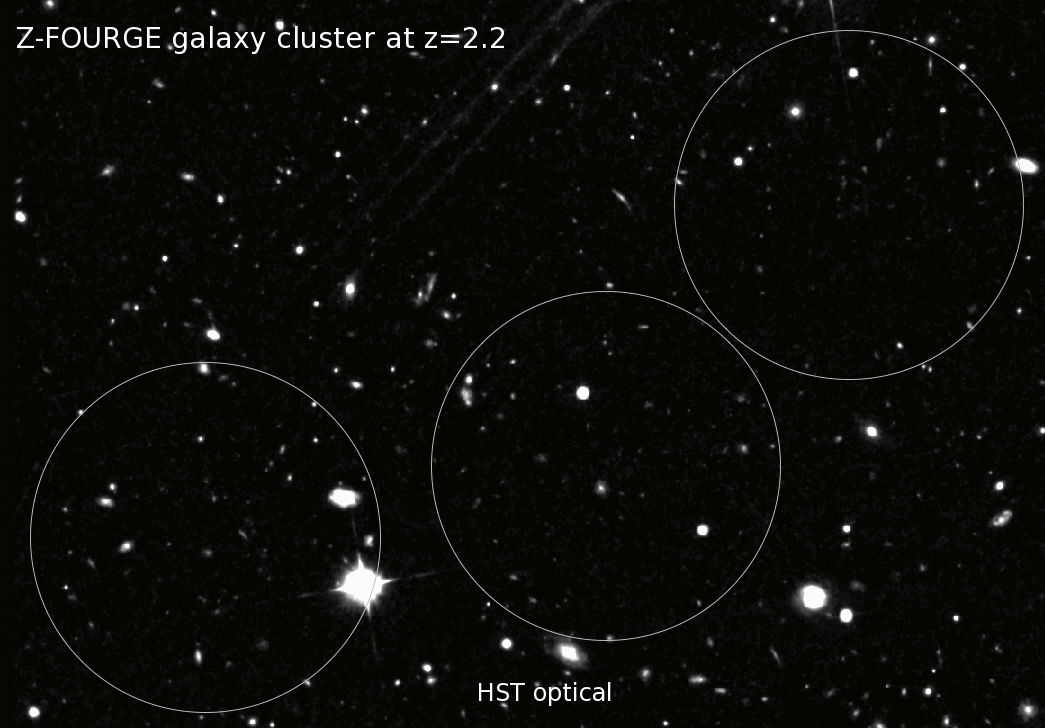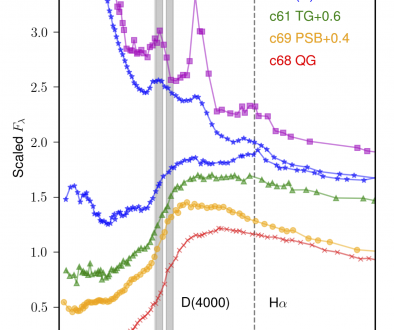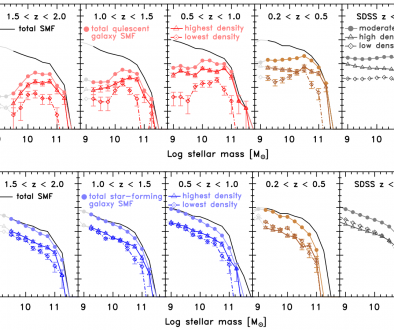Spitler 2012 Summary
We have discovered the most-distant example of a dense galaxy cluster in a well-studied region called the COSMOS field. We used new imaging to identify very distant galaxies. The cluster literally ‘popped out’ in the FourStar images, as shown below.

Galaxy number density map showing the z=2.2 galaxy cluster and surrounding regions.
This Figure highlights regions on a piece of a sky where there are dense concentrations of galaxies. Dark regions have few galaxies, while the red regions have many galaxies packed into a small region. The individual galaxies are the small dots, while the big circles highlight the location of the main galaxy cluster structure. The bar at the bottom corresponds to a length of 1.6 million light years. Compare to other survey data here.

Animation blinking between images in the optical wavelength (from the Hubble Space Telescope) and the near-infrared (from FourStar/Magellan).
comparision between Z-FOURGE and optical images
This figure shows how our new filters are able to sort out very distant galaxies from other objects like stars in our galaxy the Milky Way and nearby galaxies. With images taken at optical wavelengths, the clusters do not stand out at all. When we observed with the new filters on the FourStar imager on the Magellan telescope at near-infrared wavelengths, distant galaxies and the galaxy cluster immediately jumped out at us. The red objects are very distant galaxies.


